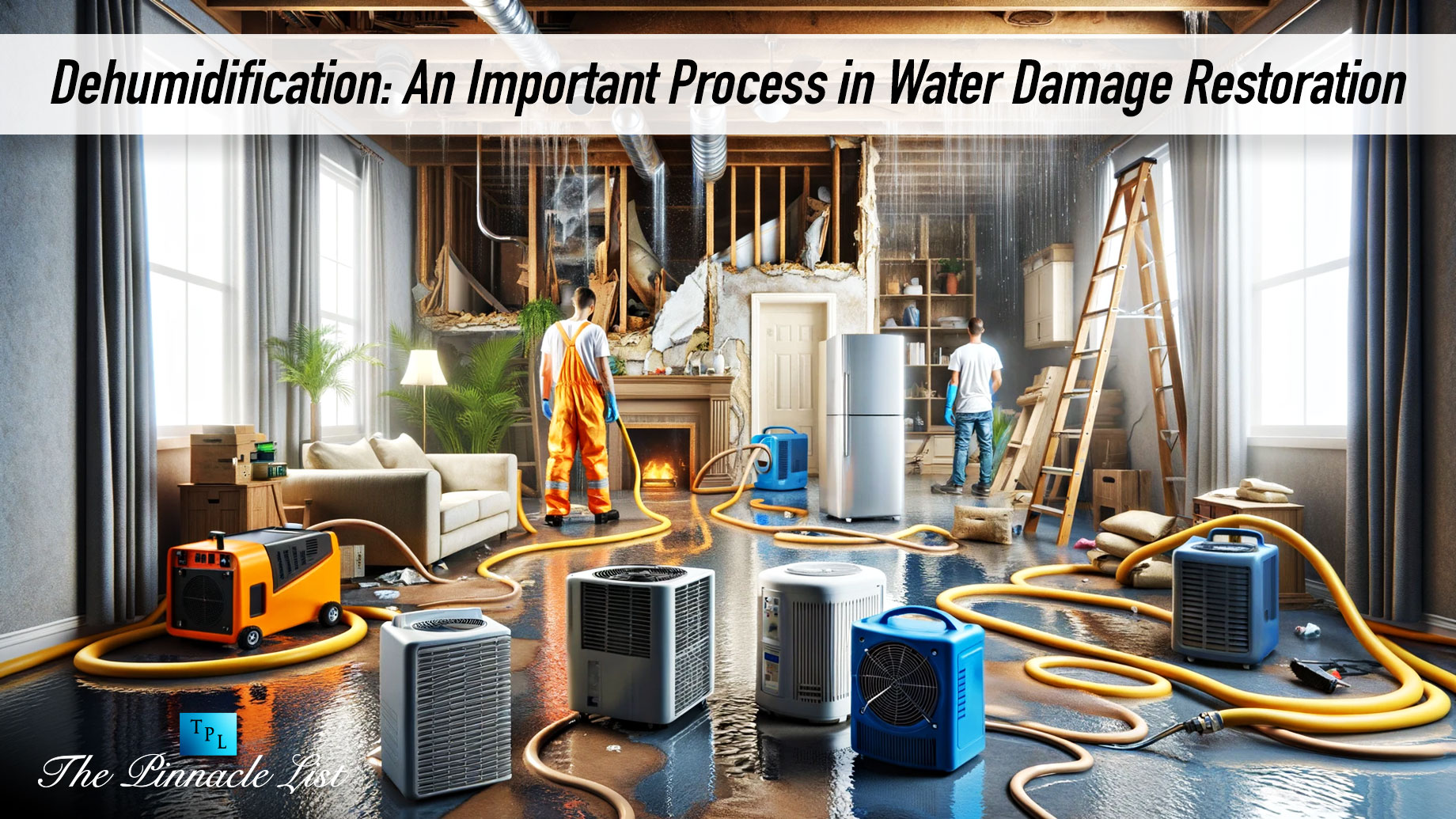
Water damage can cause unbearable problems in your home. Water leakage can cause vapors to accumulate within the cracks and gaps in the walls of your home. The structure of your home loses strength as a result of increased moisture content. We will help you find out how to eradicate moisture that endangers the integrity of your home. This article will thoroughly guide you through the following:
- Causes of water damage
- Water damage restoration
- The role of dehumidification is to get rid of water damage
- Types of dehumidifiers
What is water damage restoration?
It is very difficult to live in a house with water leakage and damage. Water damage can lead to nasty problems like:
- Mold and mildew growth.
- Allergic reactions.
- Illnesses.
- Musty smells.
Be careful! Never neglect water damage. The sooner you repair the damage, the more it adds to the safety of your home. Always hire water damage restoration services, as apart from repairing the damage, they can bring your home back to its pre-damage state. Sometimes, you can also repair the damage yourself if you possess enough knowledge and skills. However, it is nearly impossible to restore your property to its original state in case of DIY repair. Therefore, we recommend you hire skilled professionals to perform this tedious task. The benefits of hiring restoration experts include:
- Restoration within budget.
- Reduced restoration time.
What is the Process of Water Damage Restoration?
The process of restoring water damage involves five steps, which are discussed below:
Step 1: Conduct Water Damage Inspection
Thoroughly examine your home for water damage. Hire a trained professional to find the cause of water leakage and the class of water damage and identify the water contamination category.
Step 2: Extract Standing Water
Stagnant water must be removed from your home.
- Use industrial vacuums to take water out of surfaces (carpets, etc.).
- Use moisture meters to identify hidden moisture content.
At this step, make sure that there has been no damage to the physical structure of your house.
Step 3: Dehumidification
Professional restoration services employ:
- High-quality fans.
- Specialized dehumidifiers.
The dehumidifying process takes a bit longer than drying.
Step 4: Cleaning the surfaces
The fourth step includes sanitizing surfaces, freeing them from microbes. Restoration companies use the following equipment to get rid of unwanted microorganisms.
- Air scrubbers.
- High-Efficiency Particulate Air Vacuums (HEPA vacuums).
- Negative Air Pressure Machines.
Antimicrobial agents are used to remove mold and mildew spores.
Step 5: Restoration
The final step is to clear the damaged stuff that cannot be repaired and reconstruct as much as possible. Remove and replace the dry walls and deep clean the carpets. Professionals remove photos, clothes, and other belongings and take them off-site for restoration.
How does dehumidification help restore water damage?
Dehumidification is a crucial step in overcoming water damage and includes:
- Absorption of surrounding air into the machine.
- Release of the dehumidified air back into the surroundings.
Dehumidifiers perform two major functions:
- Moisture content or humidity removal.
- Heating.
Dehumidifiers and heaters are different from each other in that:
- Heaters only heat the surroundings.
- Dehumidifiers perform both tasks mentioned above.
Consider the underlying benefits of understanding the role of dehumidifiers in maintaining our homes:
- Resistance to microbial growth: A high moisture level means that the environment is favorable for the growth of microorganisms like molds. Controlled humidity levels prevent the growth of such microorganisms.
- Structural Maintenance: Controlled humidity levels protect structures like walls, doors, and windows from weakening and, in this way, maintain the structural integrity of your home.
- Odor Removal: Standing water can give birth to musty odors. Dehumidifying your home can help eradicate such smells.
- Improved Air Quality: Dehumidifiers not only absorb dust from the surrounding air but also take out allergy-causing agents from your home.
Types of Dehumidification Systems
Dehumidifiers serve an important role in the following:
- Regularity of humidity in the air.
- Maintaining air quality.
There are numerous different types of dehumidifiers. However, you can choose one for your home based on:
- Affordability.
- Personal preferences.
- House requirements.
1. Solid Sorption Dehumidification Systems
Solid sorption dehumidifiers or desiccant dehumidifiers use desiccants like:
- Silica gel, or
- Lithium chloride
Dehumidification using these involves the following steps:
- Step 1: The machine sucks the moisture from the ambient air.
- Step 2: The next step is the dehumidification of your home environment.
- Step 3: Following this is the regeneration of desiccant via heating.
Such systems reduce relative humidity to 1% and require high power for functioning.
2. Condensation-Based Dehumidification Systems
These refrigerant-based dehumidifiers possess evaporator coils to absorb absolute amounts of moisture from the ambient air via condensation. The air passes through condenser coils and then through reheat coils to:
- Increase air temperature.
- Reduce relative humidity.
This system is used for ambient air with high temperatures and high humidity. It can operate on low power.
3. Liquid Sorption Dehumidification Systems
Liquid sorbents such as:
- Lithium chloride, and
- Glycol solutions
The sorbent’s vapor pressure is less than that of the absorbed air. The sorbent is then regenerated by waving off its moisture with heat.
4. Air Compression Based Dehumidification Systems
Air is compressed to remove its absolute moisture content. They work on the same principles as that of an air compressor. Water traps remove the condensed water. However, these humidifiers can treat smaller amounts of air.
Conclusion
Water damage can give rise to severe issues. The high relative humidity promotes the growth of microorganisms like molds. Hire water damage restoration companies to help you resolve the water leakage problem in your home. These services also bring your home and belongings back to their original state after repairing the damage. Consider dehumidification for removing moisture from your home. You can buy dehumidifiers or dehumidification systems or hire professionals for this purpose.